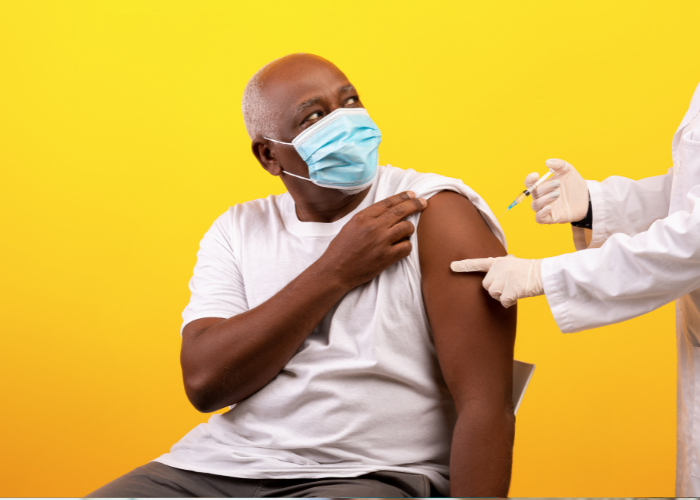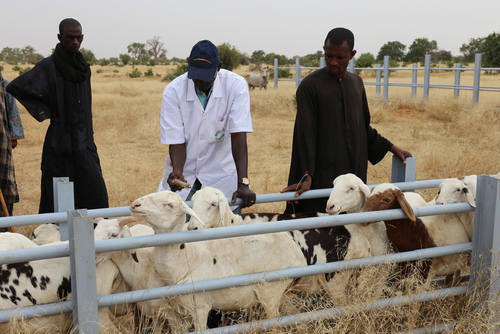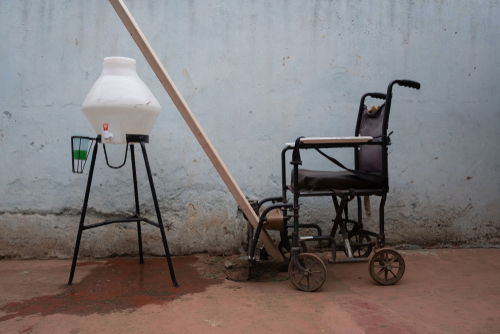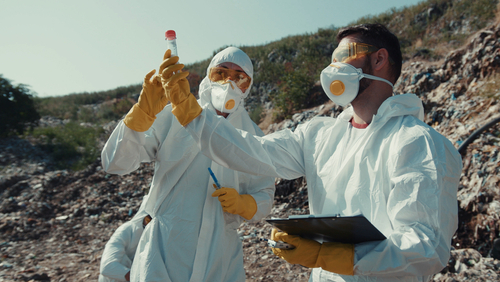May 24, 2023

RNA sequencing analysis of wastewater can help identify emerging infectious threats.
Researchers conducted a retrospective RNA sequencing (RNA-Seq) analysis of 140 untreated wastewater samples from Nagpur, India, to assess the capacity of metagenomic sequencing of emerging infectious diseases in sewer and drain water. Multiple zoonotic viruses, including chikungunya, Jingmen tick, and rabies viruses, as well as SARS-CoV-2, Hepatitis C, and influenza viruses, were detected. The SARS-CoV-2 and Hepatitis C viruses were more commonly detected in rural areas than in urban regions. The findings point to the effectiveness of RNA-Seq-based wastewater surveillance in detecting multiple infectious pathogens simultaneously across geographic locations and informing epidemiological monitoring efforts in India. [The Lancet Regional Health — Southeast Asia]
Sanitation infrastructure can help mitigate the triple burden of malnutrition in LMICs.
The triple burden of malnutrition, characterized by overweight or obese mothers with undernourished and anemic children under five, was assessed across 22 low- and middle-income countries (LMICs). The pooled prevalence of the triple burden of malnutrition among 116,795 mother-child pairs was 11 percent, with statistically significant associations with mothers aged 35 years or older, large family size, and delivery by cesarean section. Factors such as breastfeeding, improved toilet facilities, and improved drinking water sources were negatively correlated with the triple burden of malnutrition. [BMJ Open]
The oral microbiota of recovered COVID-19 patients are restored, but not fully.
Researchers characterized the oral bacterial and fungal microbiota after clearance of SARS-CoV-2 infection in 23 patients in Zhoushan Hospital, China, and compared it to those of healthy, uninfected individuals. The oral bacterial and fungal microbiomes of patients who had recovered from a COVID-19 infection 12 months earlier had been largely restored but did not match the normal microbial profile. While the diversity of the microbiomes had been restored, the composition and abundance had changed, marking a decrease in certain opportunistic fungi and bacteria. [BMC Microbiology]
Implementing the WHO-recommended HPV vaccination guidelines for adolescents with HIV
A stakeholder-based model to implement HPV vaccination in the routine care of adolescents living with HIV (ALHIV) was developed for HIV clinics in Zambia, where cervical cancer is the leading cause of cancer deaths. While HPV vaccination efforts have been coordinated in Zambia, they do not follow the WHO-recommended three-dose schedule and often fail to cover the most vulnerable adolescents, including ALHIV. The new model adopts elements from a previously successful implementation research approach, Integrative Systems Praxis for Implementation Research (INSPIRE), and leverages existing HIV care infrastructure to implement a three-dose HPV vaccination schedule in three adolescent HIV clinics in Ndola, Zambia. [PLOS One]
Interventions to improve antimicrobial stewardship vary in efficacy and methodology.
A systematic literature review identified behavior-change interventions aimed at improving antimicrobial stewardship (AMS). Of 290 relevant studies conducted in the human health sector, approximately one-third reported significant decreases in antimicrobial use (AMU) after the intervention, and nearly three-fourths saw significantly greater adherence to clinical guidelines on antimicrobial therapeutics. There was not a single methodological characteristic that was common across the successful AMS behavior-change interventions. Among other findings was a lack of studies in the animal health sector, limiting the quantity and quality of the study’s evidence base. [PLOS Global Public Health]
Antibiotic-resistant infections are associated with higher healthcare costs in high- and middle-income countries.
A systematic review of 29 studies conducted in high-, upper-, and middle-income countries was used to estimate the economic burden of antibiotic resistance. Overall, the healthcare costs, length of hospital stay, mortality, and risk of hospital readmission associated with antibiotic-resistant infections were higher than those of susceptible infections. Over half of the studies revealed significantly greater healthcare costs attributable to resistant infections, ranging from negative US$2,371.40 to $29,289.10 per patient episode. The range and severity of healthcare costs associated with antibiotic resistance were lower in upper- and middle-income countries than in high-income countries, likely due to limited access to treatment facilities and lower per unit cost of resources used. [PLOS One]
Approval of the world’s first RSV vaccine.
The US Food and Drug Administration (US FDA) approved the world’s first vaccine against the respiratory syncytial virus (RSV) for individuals aged 60 and older. RSV kills approximately 6,000 to 10,000 people aged 65 and older annually in the United States. GSK’s phase III clinical trial data showed that the vaccine, known as Arexvy, reduced the risk of lower respiratory tract disease from RSV among people aged 60 and older by 82.6 percent. Later in May, an FDA advisory group is expected to convene to discuss the safety and efficacy of Pfizer’s RSV vaccine designed for pregnant people. [Nature]
Insecticide residuality on mosquito nets in the Brazilian Amazon varies over time.
Researchers assessed the residuality of insecticides used on long-lasting insecticidal nets (LLINs) and the use and care of LLINs by residents in Porto Velho, Rondonia State, in the Brazilian Amazon region. The mortality rate of Nyssorhynchus darlingi mosquitoes varied over time and fell to 45 percent two years after the installation of the LLINs. Acceptance and use of LLINs were high among inhabitants. Alphacypermethrin-impregnated LLINs were more effective than those impregnated with permethrin regarding residuality and population satisfaction. [Parasites and Vectors]
Reducing ESBL-producing Enterobacterales transmission requires a One Health approach.
Researchers analyzed and described the prevalence of community extended-spectrum beta-lactamase (ESBL)-producing Enterobacterales colonization and regional variations in Malawi using a One Health lens. Longitudinal data and microbiological samples collected from 300 households in urban, peri-urban, and rural settings in Malawi revealed extremely high levels of ESBL-producing Enterobacterales, which was detected in over 40 percent of human stool samples, nearly one-third of animal stool samples, and approximately two-thirds of river water. Significant associations were found between human ESBL-producing E. coli colonization and the wet season, urban residence, and living with animals that regularly came into contact with food or were kept inside. [The Lancet Microbe]
Image from Canva











